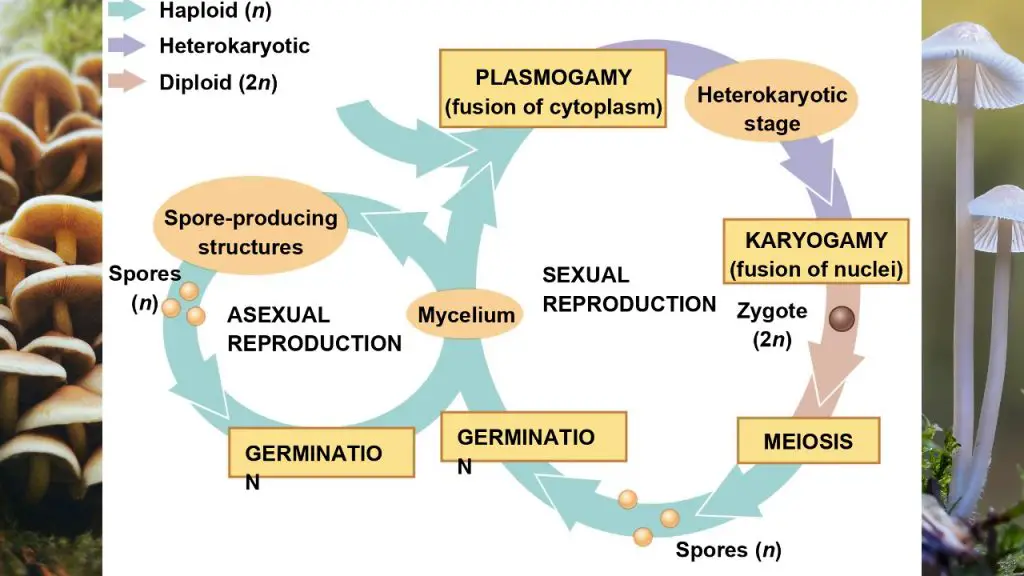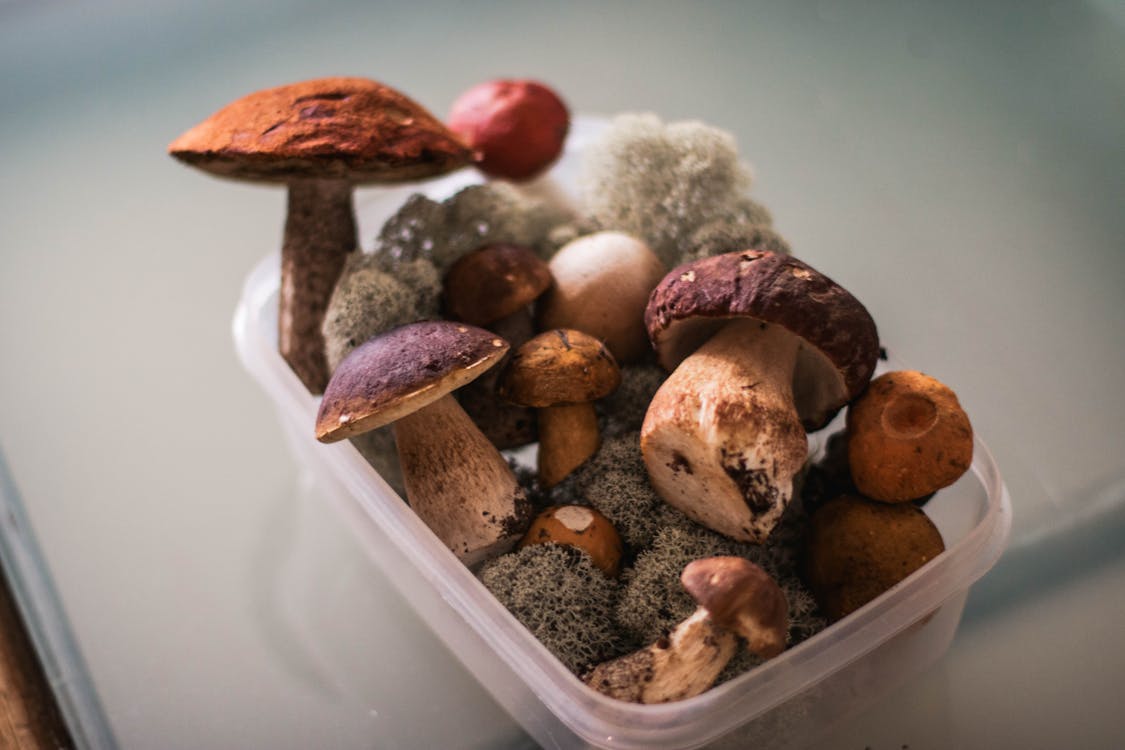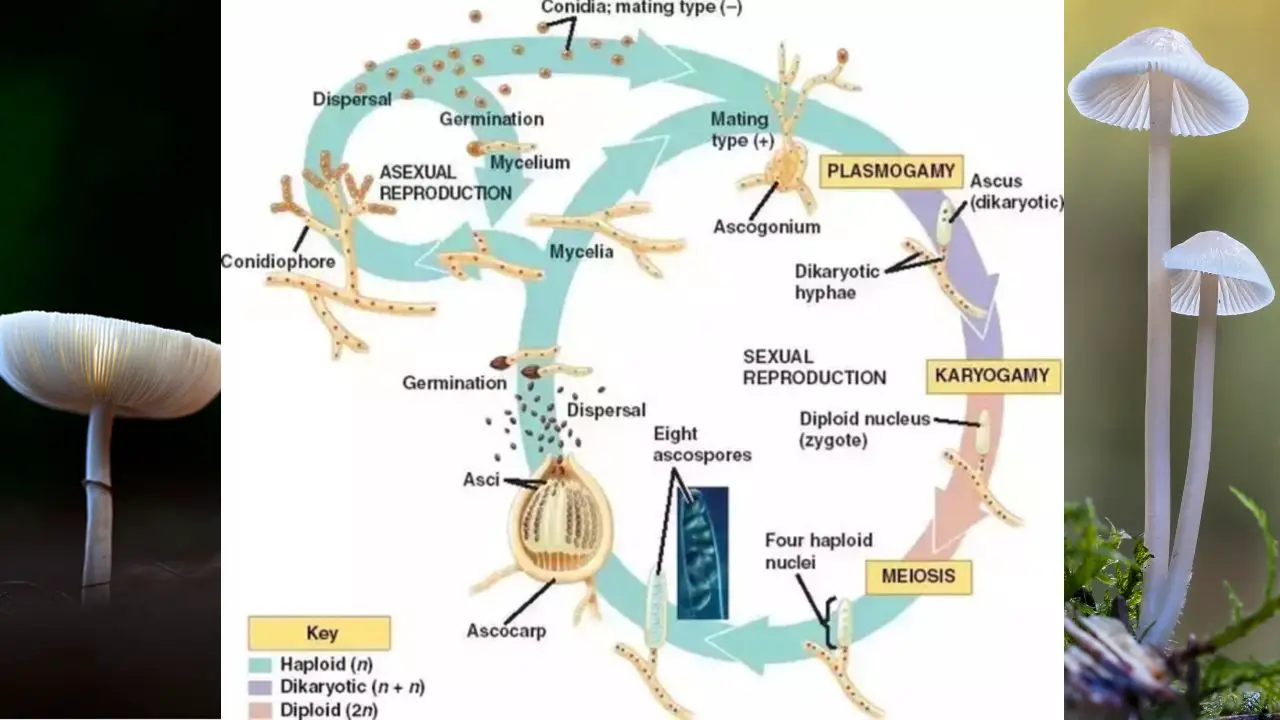If you’re gaining interest in growing mushrooms, you should probably start by understanding mushrooms’ different functions, along with the basics of mushroom reproduction.
Mushrooms reproduce sexually and asexually when the hyphae of two mushrooms merge to form a new mushroom. Asexual mushroom reproduction means mushrooms releasing their spores or breaking pieces of themselves through fragmentation or budding.
It is important to know about the reproduction of mushrooms as this way you will know how to grow them under the right conditions, which leads towards growing them in a large number.
Growing mushrooms at home are very beneficial; hence knowing about their reproduction will surely help you in the growing process. Read further below and learn everything you need to know about mushroom reproduction.
The Mushroom Reproduction Process

Reproduction in mushrooms is quite evident as through this, you get to come across some beautiful, unique-looking tiny mushrooms.
Mushrooms are reproduced through fungal mycelium, and fungi are a natural heterotrophic organism which makes it impossible for photosynthesis to take place.
Hence the reproduction depends on the other soured to produce carbon energy for the reproduction to happen. Mentioned below are a few steps of the reproduction in mushrooms:
1. Collection of Mushroom Spores
Mushrooms are a type of fungus that has no chlorophyll for them to reproduce or make food on their own. Hence, the top part of the mushroom that is usually eaten is the main fruiting part and plays a big role in the reproduction of mushrooms.
In this cap, you will find a million spores that have the capability to reproduce more mushrooms. These spores are more like single cells that help in the reproduction process of mushrooms.
2. The Function of Spores
As you’re now aware that spores cells are present on the main fruiting body of the mushrooms, without these you cannot expect reproduction in mushrooms. There are two types of spores asci or basidia.
Asci cells are internally produced while basidia are produced externally. Mushroom spores are released when spores break off from the basidia cell or when the tip of the asci cell breaks off.
Once the spores are released and carried away by the wind, they land in different areas and grow. Likely, the mushrooms don’t grow near their parent. The cap of the mushroom usually dies once the spores are released into the air.
3. The Function of the Asci and Basidia Cells
Asci cells appear on the internal surface of the fungi cup, and when these breaks open, all the spores are released. Mushrooms such as the gilled and puffballs ones have basidia cells.
These cells are located on the bottom of the cap in gilled mushrooms and in the tubes in bolete mushrooms. When in the puffball, these appear in the cap’s body.
4. Continuation of the Reproduction Cycle
The spores can survive and grow only if they go into a new mushroom and in an environment that is suitable for mushroom cultivation.
A suitable environment is one that has proper moist and damp soil and a gassy location. The spores will grow filaments called hyphae and form the hyphae the mycelium grows.
The mycelium is a part of the mushroom that grows under the soil through which a stem grows and over that occurs the fruiting cap of a mushroom.
Once the hyphae of the spores meet the hyphae of another spore, the reproduction process begins that leads to reproduction in many more mushroom spores.
Asexual and Sexual Mushroom Reproduction

As mentioned earlier, a mushroom grows both sexually or asexually as they are non-vascular. There is no use of seeds for reproduction to take place in mushrooms as fungi are nothing compared to plants.
To help you understand better how can a mushroom reproduce, mentioned below are both the Asexual and sexual reproduction of mushrooms:
Asexual Reproduction of Mushrooms
Are Mushrooms Asexual? Yes, mushrooms have asexual reproduction abilities, and here is how it takes to process. Mushrooms are able to reproduce asexually through spores from the fungus and reproduce.
The spores are reached through the gills of the mushroom that appear under the cap. These are similar to plant seeds but are a bit more light and small in size. The spores can get releases outside in the open or in a reproductive sac known as the sporangium.
This is why you may come across many mushrooms in the wild that are usually small-looking ones known as puffballs. The spores also appear in other open locations and develop into proper full mushrooms.
The Asexual reproduction of mushrooms also takes place through budding, which involves the separation of the parent mushrooms outgrowing into another cell. You can achieve a new form through fragmentation by splitting part of the mycelium from the parent mushroom.
Mentioned below are the three different ways fungi are able to reproduce asexually:
- Budding – Through which the mushrooms break to grow a new part of their structure, and takes a root of its own once it breaks off
- Spores – Spores are released in the air, growing new fungi in different parts of a land. This also depends on the species of the mushroom.
- Fragmentation – In which a small part of the mushroom mycelium splits, and produces a new mushroom

Sexual Reproduction of Mushrooms
The sexual reproduction process of mushrooms involves two types of hyphae getting fused together before the fungi start to develop in the mushroom’s fruiting body. The hypha is basically a filament structure that emerges from the mushroom spores. When the hyphae is collected from the spores and joined together, it is known as gametangia reproduction.
The sexual reproduction process of mushrooms continues when the gametangia are combined to form a diploid zygospore. This undergoes the meiosis, which again helps produce haploid sporangia. The haploid sporangia also help create more spores which allows the reproduction process to continue.

Final Words
Now that you’re aware of how do mushrooms reproduce you can now choose to grow mushrooms on your own in your homes both indoors and outdoors. You can grow mushrooms using a mushroom growing kit or through a harder process which you can easily learn.
Mushroom reproduction is something you must remember if you love gardening and wish to plan these one day. Hopefully, with the help of this article, you now have a good idea about reproduction in mushrooms. To learn more about gardening and some good lawn products, check

